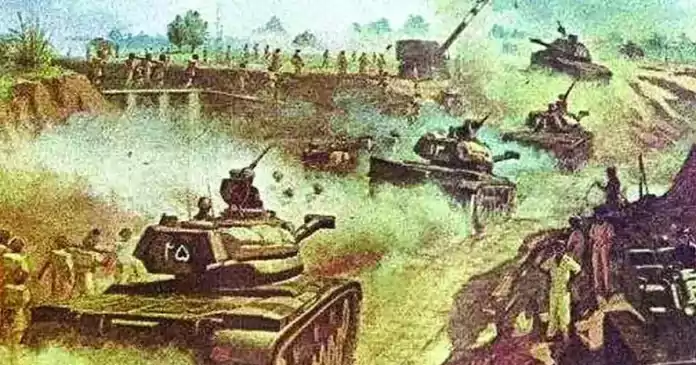Pakistan Army
The Kashmir Sector
During the Indo-Pakistani War of 1965, the Pakistan Army was involved in several military operations in the Kashmir region. The war began on April 1, 1965, and lasted until September 23, 1965. The conflict primarily centered around the disputed region of Kashmir and its surrounding areas. I will mention few examples of valour in the Kashmir Sector.
1. Operation Gibraltar
Operation Gibraltar was a military maneuver conceived and executed by the Pakistan Army during August 1965 in the contested expanse of Jammu and Kashmir. This covert operation was formulated with the intent of clandestinely breaching the Line of Control (LoC) and provoking an insurrection within the predominantly Muslim populace of Kashmir against the Indian governmental authority.
Pakistani military strategists believed that such a local uprising, triggered by Operation Gibraltar, would substantiate Pakistan’s justifications against India on the global platform. Deliberately chosen as a historical allusion, the name “Gibraltar” aimed to draw parallels to the historical Muslim conquests of Portugal and Spain, originating from the strategic port of Gibraltar.
Brig Hazur Hasnain SJ & Bar,
during this operation, stood out as one the greatest soldier the Pakistan Army has known. Shorter than average in height, he was a giant among men. Born on 27 November 1936 in UP, he migrated to Pakistan and was educated in Hyderabad. Joined PMA in 1957 he went on to bag all three awards, The Sword of honour, Norman Gold medal and silver spurs. Commissioned in 15 Baloch, he joined the SSG. Before the Indo-Pakistan War 1965, broke out, he was dropped behind enemy lines. Having carried out attacks as per his mission, he was surrounded but fought his way back and for his heroism was awarded Sitara e Jurat. He was decorated for valour again during the Indo-Pakistan War 71, in erstwhile East Pakistan.
2. Operation Grand Slam
Also known as Operation Grand Slam, this was a Pakistani offensive launched in the Chamb sector of Jammu and Kashmir in August 1965. The objective was to eventually link up with the guerillas that were launched inside Indian held Kashmir and also to cut off the Indian town of Akhnoor from the rest of India and potentially threaten the city of Jammu. This operation was carried out successfully and Pakistan Army was knocking at the Akhnur Bridge by 5 September 1965, when the Indians attacked Lahore and Sialkot on 6 September 1965, starting the all-out war.
• Lt (later Maj) Shabir Sharif Shaheed
During the Battle of Chamb-Jaurian, the Brigade Commander ordered 6 FF to send out a Reconnaissance Patrol, to take a look at the deployment of Indians on and around that ‘Throti’ feature. Shabir who was originally tasked to carryout reconnaissance, saw an opportunity where an arty battery was in a state of rest and not fully alert. Seeing an opportunity, he changed his mind and instead of going back, he attacked the gun positions and got them into a panic, thus forcing them to either withdraw or fall for him. He captured four Indian POWs and having destroyed two guns he brought along a field gun towed to a gun-tower (Shaktiman). He put in his own wounded soldiers and Indian POWs in the same vehicle on his arrival back, with full information about the Indian deployment. This action of Lt (later Major) Shabir Sharif, enabled operations of 10 Infantry Brigade to be resumed with 6 FF again leading on the main axis with 13 Lancers in support on a manoeuvre to get around Throti Feature and face towards Jaurian. These ops were a great success and the Indians panicked and ran. The Brigade took a large number of vehicles, ammunition dumps and POWs. It was perhaps the largest ever haul of men and materials in all our wars with India. During the Indo-Pakistan War 1971, Maj Shabir Sharif earned Shahadat and well deserved Nishan-e-Haider.
• Major Raza Shah Shaheed, SJ:
Before the war started he was the Group Commander of Gunnery at the School of Armour. As soon as he learnt of war being imminent, he took off for the battle front and joined his great Regiment, the PAVO’s 11 Cavalry. As the operation started on 31 August, he was a leading squadron commander and despite the terrain being unfriendly tank country, he braved Indian defenses and carried out his task, supporting the accompanying infantry in the process embraced Shahadat on 1 August 1965, thus becoming one of the first casualties of the War.
The Sialkot Sector
During the Indo-Pakistan War of 1965, the Sialkot Sector was one of the main theatres of conflict between the Indian and Pakistani forces. The war was fought over various issues, including the Kashmir dispute and territorial claims, and the Sialkot Sector witnessed significant military operations.
The Pakistan Army launched a major offensive in the Sialkot Sector with the objective of capturing key areas and putting pressure on the Indian defenses. The sector was strategically important due to its proximity to the city of Sialkot, which was a crucial transportation and communication hub.
• The Battle of Chawinda:
One of the most prominent battles in the Sialkot Sector was the Battle of Chawinda. Pakistani forces launched an offensive to capture the town of Chawinda, located near the border with India. The battle lasted several days and saw intense fighting between the two sides. The Indian Army, under the leadership of Lieutenant General Harbaksh Singh, managed to repel the Pakistani offensive and inflict heavy casualties on the Pakistani forces.
• The Battle of Phillora:
Another significant engagement in the Sialkot Sector was the Battle of Phillora. Pakistani forces attempted to capture the town of Phillora, but the Indian Army successfully defended its positions. The battle involved tank warfare and artillery exchanges, and the Indian forces managed to hold their ground.
• Ceasefire and End of Operations:
As the war continued, international pressure mounted for a ceasefire. Both India and Pakistan agreed to a ceasefire on September 23, 1965, effectively ending the hostilities. The ceasefire resulted in no major territorial changes, and the situation returned to the status quo.
The operations in the Sialkot Sector were marked by intense fighting and heavy casualties on both sides. While the Pakistani Army made initial advances, the Indian Army’s strong defensive positions and effective use of tanks and artillery played a crucial role in halting the Pakistani offensive.
The 1965 war had a lasting impact on the region, influencing the political and military dynamics between India and Pakistan. The events of the war continue to be studied by historians and military analysts to understand the strategies, tactics, and outcomes of the conflict. The following stood out by their valour and fighting beyond the call of duty:
1. Operations of 25 Cavalry Regiment
• Lt Col (Later Brig) Nisar Ahmed. Was the commanding officer of 25 Cavalry, during its operations in Sialkot Sector, particularly in the battle of Chawinda. His leading from the front and in the process of bringing the Indian 1 Armoured Division Deserves a special mention and should be remembered for all times. He was deservingly decorated with the Sitar-e-Jurat.
• Maj (later Brig) Mohammad Ahmed
On raising of 25 Cavalry Regiment (9 June 1962) at Kharian, Maj Ahmed was amongst the pioneering officers to join “Men of Steel”. While in the Regiment, he was selected to attend the Tank Technology Course from UK from 1964 to 1965. On his return to Pakistan, he joined his Regiment, 25 Cavalry and fought in the famous “Battle of Chawinda”, a battle that stands in the annuls of Pakistan Army’s history as one of the fiercest battles of all times. Where the Regiment performed outstandingly, with its Commanding Officer Lt Col Nisar Ahmed (Kaka Nisar), getting SJ and several others as well. It was Major Mohammad Ahmed, while commanding B Squadron, who fought like a true cavalier, wherein the tanks he was fighting in were hit successfully and he had to change his tank thrice. During the battle he sustained another direct hit, due to which his hands and face were badly burnt and evacuated in a semi-unconscious state. He was awarded with a well-deserved SJ.
2. Maj Ziauddin Abbasi (Guides Cavalry) – “My squadron will advance”
The Indian military strategically deployed its potent armoured division, comprising tanks, armored vehicles, and infantry, with a resolute objective: a swift advance towards Wazirabad. This pivotal moment necessitated exceptional leadership and audacious strategy. Amid this turmoil, Major Abbasi emerged as an inspirational figure, instilling valor and unwavering determination in his squadron. His authoritative command resonated: “Today, my squadron will advance with unprecedented swiftness and impact, transcending historical warfare precedents.”
Against the unrelenting Indian assault, Maj Abbasi’s squadron stood unwavering, a bulwark against waves of attacks. His leadership, an unwavering beacon, embodied unshakeable resolve. At the forefront, his tank boldly engaged, advancing fearlessly with turret exposed. This display held strategic and symbolic weight, encapsulating his commitment to precision amid battle chaos. Amid shelling, Maj Abbasi remained resolute, the epitome of courage.
His daring decision to lead with an open turret showcased dedication to mission and men. With each inch gained, his presence galvanized soldiers, mirroring battle intensity. Recognizing the enemy’s fierce artillery rendered head-on assault futile, Maj Abbasi’s brilliance shone.
He daringly flanked with a small contingent, resolute amidst enemy fire, standing tall in an exposed turret. His actions testified to leadership and unwavering commitment. Tragedy struck during this campaign. A shell hit, and Maj Abbasi embraced martyrdom with comrades. His tank, once a symbol of advance, became a sacrifice monument. Yet, his legacy persisted. His strategy and courage inflicted heavy enemy casualties, casting doubt on their ambitions.
Maj Abbasi’s fearless charge and leadership left an indelible mark, halting enemy advances, his heroism etched in memory. His name became synonymous with the Battle of Chawinda – a testament to duty. Posthumously awarded the Sitara-e-Jurat, Maj Ziauddin Ahmad Abbasi epitomized front-line leadership, inspiring comrades in the pursuit of honor and country.
The Lahore Sector
During the Indo-Pakistan War of 1965, the Lahore Sector witnessed intense military operations between the Indian and Pakistani forces. The war was primarily fought over the Kashmir issue, and the Lahore Sector was one of the main theatres of conflict along the western border between the two countries.
The Pakistani Army launched a major offensive in the Lahore Sector as part of its strategy to divert Indian forces and relieve pressure on its forces in other sectors. The main objective was to capture key areas in the Indian state of Punjab, including the city of Amritsar. The Pakistani forces aimed to exploit the perceived vulnerabilities in the Indian defense and achieve a breakthrough.
One of the significant engagements in the Lahore Sector was the Battle of Burki. In this battle, Pakistani forces launched an attack on the Indian positions near the village of Burki, located southeast of Lahore.
The battle was fierce, with both sides suffering casualties. While the Pakistani forces made initial gains, the Indian Army managed to repel the attack and maintain control of the area.
The Lahore Sector saw significant fighting, and while the Pakistani Army made initial gains, the Indian forces were ultimately able to repel the attacks and defend their positions. The war ended with no major territorial changes, and both sides claimed victory. The conflict left a lasting impact on the region and contributed to the strained relations between India and Pakistan. The following stood out by their valour and fighting beyond the call of duty:
• Maj Gen Sarfraz Khan.
He was the GOC of the 10 Infantry Division that was defending Lahore and fought the battle of Lahore most brilliantly. He was decorated with a Hilal-e-Jurat, whereas he had already earned a Military Cross (MC), during WW II.
• Brig Ahsan Rashid Shami,
who was well ahead in the theatre of battle monitoring and coordinating the artillery support. Being precariously close to the Indian Forces, he fell victim to ground fire and embraced Shahadat. He was awarded the Hilal-e-Jurat, posthumously, thus becoming the highest-ranking officer during the War in 1965.
• Brig Qayum Sher,
who fought the defensive battle for Lahore, during which he carried out counter attacks to dislodge the Indians. He was decorated with a Hilal-e-Jurat.
• Maj Raja Aziz Bhatti, who was defending the onslaught of the Indian offensive, right on the frontlines and also conducting the artillery fire, fell to a direct hit from ground fire, setting a personal example of leadership and embraced Shahadat and decorated with a Nishan-e-Haider.
The events of the 1965 war continue to be a subject of historical analysis and debate, as they shaped the political and military dynamics between the two countries in the decades that followed.
The Sulaimanki Sector
During the Indo-Pakistan War of 1965, the Sulaimanki Sector was a significant theater of military operations between the Pakistani and Indian forces. The sector is located in the southern part of Punjab, near the international border between the two countries. The war was fought over various issues, including territorial disputes and the broader Kashmir conflict.
The Pakistan Army conducted several operations in the Sulaimanki Sector as part of its broader strategy to engage Indian forces and achieve tactical objectives. One of the key objectives for Pakistan was to capture territory and put pressure on Indian defenses in this sector.
• The Battle of Dograi and Bedian:
One of the notable operations in the Sulaimanki Sector was the Battle of Dograi and Bedian. Pakistani forces launched an offensive to capture the Indian-held town of Dograi and the nearby village of Bedian. These areas were strategically important due to their proximity to the Sutlej River and their potential impact on the Indian defense lines. The Battle of Dograi was particularly fierce, with intense fighting between the two sides. The Pakistani Army made initial gains and managed to enter the outskirts of Dograi. However, determined Indian counterattacks pushed the Pakistani forces back, and the town remained under Indian control.
• The operations in the Sulaimanki Sector
were marked by heavy fighting and casualties on both sides. The terrain and defensive positions played a crucial role in determining the outcomes of various battles. While the Pakistani Army made some initial gains, the Indian Army’s resilient defense and counterattacks prevented any major breakthroughs.
Khem Karan Sector
The Khem Karan Sector was a strategically significant theater of operations during the Indo-Pakistan War of 1965. The sector is located in the northwestern part of India, near the international border with Pakistan. The war was marked by intense battles and military engagements as both countries sought to achieve their respective objectives. The Pakistan Army conducted several operations in the Khem Karan Sector as part of its larger military strategy. The sector held importance due to its proximity to the town of Khem Karan and its strategic location in the defense of Punjab.
• Battle of Asal Uttar:
One of the most notable battles in the Khem Karan Sector was the Battle of Asal Uttar. Pakistani forces launched an offensive with the aim of capturing the Indian town of Khem Karan and making advances deeper into Indian territory. However, Indian forces under the leadership of Brigadier Harbaksh Singh successfully repelled the Pakistani advance. The Battle of Asal Uttar is often referred to as the “Defence of the Deserts” because the Indian Army effectively used the natural obstacles and defensive positions of the region to halt the Pakistani advance. The Indian forces had prepared well-concealed anti-tank defenses, including minefields, trenches, and well-emplaced artillery. Pakistani forces faced significant casualties as they encountered strong resistance from the Indian defenders. The Indian Army’s successful defense prevented the Pakistani forces from achieving their objectives in the sector.
• Ceasefire and End of Operations:
The war between India and Pakistan ended with a ceasefire on September 23, 1965. The ceasefire agreement halted all military operations and hostilities along the border, including in the Khem Karan Sector.
The operations in the Khem Karan Sector were marked by heavy fighting and casualties on both sides. The Battle of Asal Uttar stood out as a significant victory for the Indian Army, showcasing their ability to defend against determined enemy offensives using well-planned defensive strategies. The 1965 war had a lasting impact on the region and the relationship between India and Pakistan. The events in the Khem Karan Sector and other sectors along the border during the war continue to be studied by historians and military analysts to understand the tactics, strategies, and outcomes of the conflict. The following stood out by their valour and fighting beyond the call of duty:
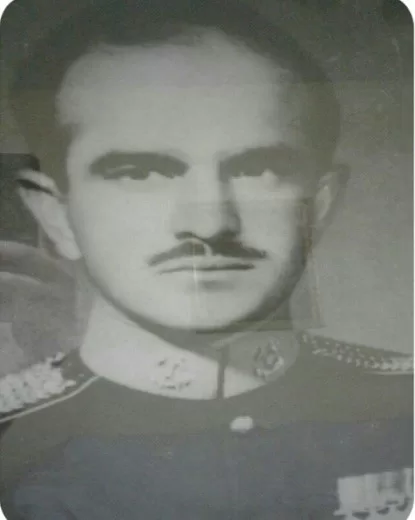
Lt Col Sahibzad Gul, Commanding Officer 6 Lancers
He took over the command of 6th Lancers in Jul 1964. On declaration of emergency, in first half of 1965, he moved the Regiment to the field service area. He was the commanding officer 6th Lancers during Indo – Pak war 1965. The regiment fought in the Khem Karan sector. It was 6 Lancers that stepped first into Indian territory and under its brave Commanding Officer, Lt Col Sahibzad Gul, captured Khem Karan, amongst the first Indian towns to be captured by Pakistan.
On 8 September 1965, 6 Lancers, outflanked Khem Karan, advanced along the railway line and reached Voltoha Railway Station and contacted the Indian defences, only one platoon of 1 FF was with them. At about mid-day on 9 September, commander 5 Armoured Brigade ordered 6 Lancers with two companies 1 FF to capture Voltoha ,1 FF quickly established the firm base and contacted the Indians at Asal Uttar, 6 Lancers advanced and attacked the Indians at Voltoha. Their objective was milestone 32, Indian called it “Battle of Asar Uttar. Lieutenant Colonel Sahibzad Gul, while leading from the front was standing on turret of his tank and observing the Indian position, when he was mortally wounded and his tank blew off the ground due to anti-tank fire from enemy.
Due to his brave and bold command, he was awarded Sitara e Jurat posthumously. Two officers, eleven Non-Commissioned Officers and 7 Sowars of the 6 Lancers embraced Shahadat. Account of his brave action is given in his citation.
The Desert Sector
The Desert Sector, also known as the Rajasthan Sector, was a crucial theater of operations during the Indo-Pakistan War of 1965. This sector encompassed the vast desert regions in the western part of India, near the international border with Pakistan. The war in this sector witnessed significant military engagements and strategic maneuvering.
Pakistan Army conducted several operations in the Desert Sector as part of its military strategy during the conflict:
The operations in the Desert Sector were marked by fierce fighting and significant casualties on both sides. The battles in this sector were characterized by tank warfare, as both India and Pakistan deployed armored units in the desert terrain. The events in the Desert Sector during the 1965 war have continued to be studied by military historians and analysts to understand the tactics, strategies, and outcomes of the conflict. The war had a lasting impact on the region and the relationship between India and Pakistan, shaping their military doctrines and approaches in subsequent years.
Ceasefire and End of Operations:
The war between India and Pakistan ended with a ceasefire on September 23, 1965. The ceasefire agreement halted all military operations and hostilities along the border, including in the Desert Sector. The war ended with a ceasefire brokered by international mediation, and both sides agreed to the Tashkent Agreement in January 1966.
The agreement facilitated a return to the pre-war boundaries and established the ceasefire line, which later became known as the Line of Control (LoC) in Kashmir.
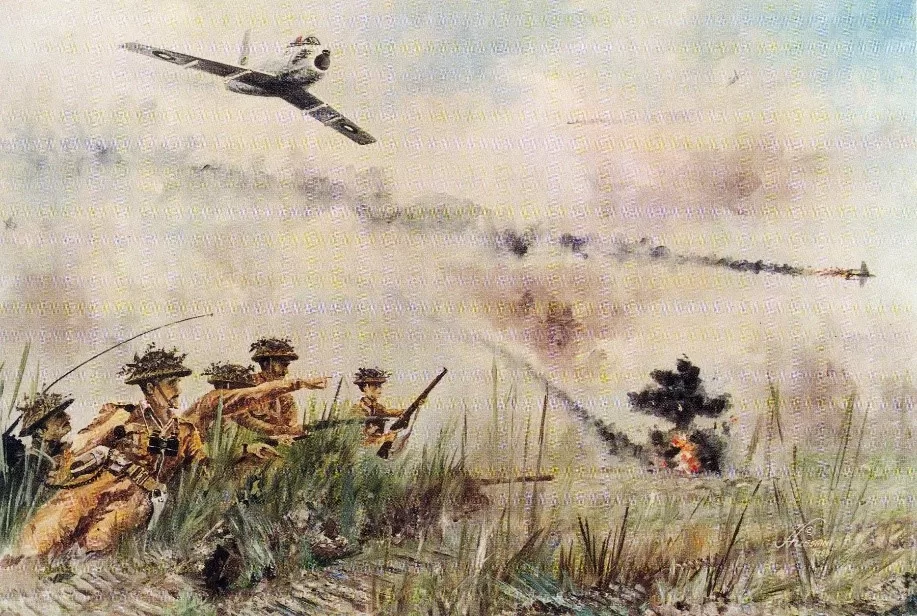
PAF
Some exceptional actions and decisive moments:
The PAF pilots were like air gladiators, whose heroics are endless and to write down about each of them is beyond the scope of this discourse. Several individual moments during the war showcased the PAF’s excellence. I will mention these briefly here.
Battle of Chamb
Squadron Leader Sarfraz Rafiqui
September 1, 1965, marked a pivotal juncture in the Pakistan-India conflict, as the Pakistan Air Force (PAF) initiated a daring strike under the leadership of Sarfraz Rafiqui. As dusk settled that evening, the swift advancement of the Pakistan Army’s 12 Division in the Akhnoor sector of Indian Occupied Kashmir (IOK) prompted the Indian Air Force (IAF) to respond, with its No 45 Squadron promptly dispatched from Poona to Pathankot, deploying Vampire aircraft for close support amidst the challenging Kashmiri terrain. The escalating ground situation spurred the Vampires into immediate action. In a series of three successive strikes, each comprising four Vampires, the IAF aimed to defend their positions.
Despite the IAF’s claims of success, Major General G S Sandhu’s account in ‘History of Indian Cavalry’ offers a contrasting narrative. The first Vampire assault effortlessly obliterated three AMX-13 tanks of India’s 20 Lancers, alongside vital support vehicles. Subsequently, the second sortie targeted Indian infantry and artillery, culminating in impactful explosions among ammunition-laden vehicles.
However, a transformative moment materialized when Squadron Leader Rafiqui and Flight Lieutenant Imtiaz Bhatti of the PAF entered the fray. Patrolling near Chhamb at an altitude of 20,000 feet, they locked onto two Vampires guided by radar. With a swift descent, Rafiqui engaged the adversaries, dispatching the first Vampire with a lethal volley from the 0.5″ Browning six-shooter, just as two additional Vampires closed in. This pivotal encounter marked a definitive turning point in the conflict, underscoring the PAF’s adeptness and strategic acumen. Sarfraz Rafiqui’s calculated actions illuminated the efficacy of the PAF’s approach, emphasizing that strategic maneuvers could indeed reshape the course of history even when confronted with daunting odds.
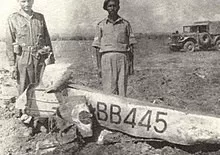
Attack on Halwara Airfield
On 6 Sep 1965, Squadron Leader Sarfraz Ahmed Rafiqui led a formation of three F-86 aircraft on a strike against Halwara airfield. Soon after crossing the Indian border, Rafiqui had been warned about a large number of enemy interceptors being in the air by the leader of a returning F-86 formation. He, however, continued his mission single-mindedly.
On the way back, the formation was intercepted by about ten Hunter aircraft out of which Rafiqui accounted for one in the first few seconds. After Rafiqui shot down one Hunter aircraft, his guns jammed due to a defect and stopped firing upon which he refused to leave the battle area, as he would have been perfectly justified to do; he instead ordered his No. 2 to take over as leader and continue the engagement with the enemy.
He himself now took up a defensive position in the formation in an attempt to give it as much protection as was possible by continuing fighting manoeuvres in unarmed aircraft whilst the remainder proceeded to give battle to the enemy.
This called for a quality of courage and dedication on the part of Rafiqui equal to the best in the history of air fighting. The end for him was never in doubt. He chose to disregard it and, in the process, his aircraft was shot down and he was killed but not without his action enabling his formation to shoot down three more Hunter aircraft.
Rafiqui thus provided exemplary leadership in battle and displayed outstanding courage in the face of exceptionally strong opposition. His inspiring leadership and selfless example significantly affected the subsequent course of the air war in which PAF never failed to dictate terms to an overwhelmingly larger and better-equipped enemy.
Rafiqui’s conduct was clearly beyond the call of duty and conformed to the highest tradition of leadership and bravery in battle against overwhelming odds. For this and his earlier exploits, he is posthumously awarded HJ.
The First Air Strike on Pathankot
Air Commodore Sajad Haider:
The strike mission which he led on 6th Sep 1965, against Pathankot airfield, where his formation destroyed 13 enemy aircraft including nine MIG-21’s, was conducted in the best traditions of the PAF. The formation carried out repeated attacks in the face of heavy Ack Ack. For the determination, courage and exceptional flying skill with which he flew and led his Sqn during operations against the enemy. Squadron Leader Sayed Sajad Haider is awarded SJ”.
Saving Lahore
On the morning of Sep 6 when news came of the enemy attack on Lahore sector, a PAF squadron, which was on a mission elsewhere was diverted to stop the advancing Indians. This Squadron gave the Indians the fore taste of things to come.
At around 0900 hrs the Squadron was ordered to strike the Indian army advancing on Lahore along with Amritsar-Wagha road.
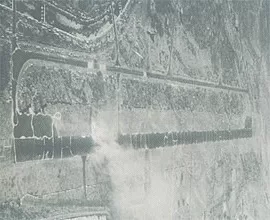
Squadron Leader Sajad Haider along with Flight Lieutenants Mohammad Akbar, Arshad Sami, Khalid Latif, Dilawar and Ghani Akbar flew this historical mission which saved Lahore and in turn saved Pakistan that day.
The formation armed with rockets, in addition to the guns, took off in Sep haze and levelled off at the planned height before heading towards the target.
Shortly afterwards they were over the target area where to their amazement they spotted enemy vehicles of all sorts moving along the road crossing Wagah covered by Indian armour. For the while enemy did not see them but when they did, it was a sight to see the drivers jumping out to take cover leaving their vehicles to their fate.
In all they made six attacks each and the formation stayed for 16-17 minutes over the target, making sure that the enemy attack on the motherland was completely blunted. By the time they decided to exit, there were columns of fire all around, melting steel with enemy within. Sajad Haider called-off the mission after nearly all their ammo was depleted and fuel perilously low.
Squadron Leader M M Alam- the extraordinary feat and the Making of an Ace
The air duals overhead Sargodha, to defend this important base stay in the annuls of air history as one of valour and resilience of PAF pilots. It is here that Squadron Leader M M Alam made those historic kills.
On the morning of September 7th, the skies above Sargodha became a battleground as the Indian Air Force (IAF) launched a retaliatory strike. Anticipating this move, the Pakistan Air Force (PAF) was prepared, with the Sargodha Base standing at full alert.
Among the PAF ranks, an exceptional pilot named Alam, accompanied by his wingman Flight Lieutenant Masood Akhtar, was patrolling the skies on a Combat Air Patrol (CAP) mission.

As the haunting silhouettes of IAF Hunters appeared over Sargodha, Alam received radar vectors guiding him towards the incoming threat. In a synchronized response, another section of PAF Sabres, led by Flight Lieutenant Bhatti, endeavored to engage the approaching Hunters.
Yet, it was Alam who surged forward, positioning himself as the first line of defense. High above in an F-104, Flight Lieutenant Arif Iqbal keenly observed the unfolding events with profound fascination. Alam’s radar screen painted the locations of the enemy planes, and as he was vectored back towards Sargodha, his wingman Akhtar reported a contact with four Hunters.
With a swift decision, Alam plunged towards the adversaries, shedding his external stores to enhance maneuverability.
However, in the midst of the chaos, two more Hunters emerged behind Alam. Reacting with split-second instincts, he disregarded the four in front and climbed to confront the duo behind.
The Hunter squadron changed course, abandoning their intended strike on Sargodha, and veered towards Alam. Capitalizing on his F-104’s speed advantage, Alam executed a daring maneuver, pulling up and then reversing his course to close the distance. Fixating on the rearmost Hunter, Alam initiated his attack.
His first Sidewinder missile launched, but missed its mark, exploding harmlessly on the ground. The skirmish played out amidst a web of high-tension wires, adding an element of peril to the dogfight.
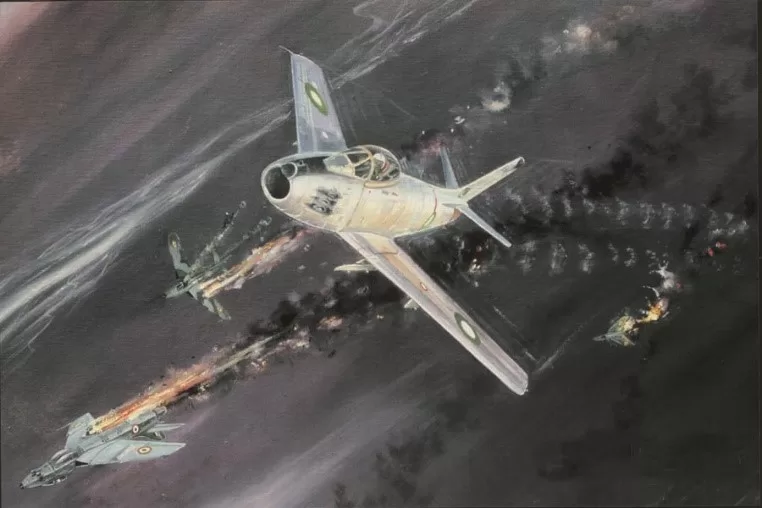
As the Hunters navigated to avoid the wires, Alam seized the opportunity and fired a second Sidewinder. The missile raced toward its target, colliding with the tail of the Hunter. Alam had achieved his first kill, downing the enemy aircraft. The Hunter’s pilot, Sqn Ldr Onkar Nath Kakar, ejected and was later captured as a prisoner of war.
Amidst the flurry of action, Alam momentarily lost sight of the remaining five Hunters. His wingman’s voice cut through the chaos, revealing their positions. Alam swiftly located the five-enemy aircraft, flying in impeccable formation at low altitudes and high speeds.
The Hunters, unaware of the impending danger, initiated a sharp left turn. In a matter of heartbeats, Alam seized his moment. He unleashed a torrent of firepower from his aircraft’s powerful weaponry, executing precise shots with deadly accuracy. The Hunters, unable to counter the onslaught, fell one after another, their demise etched against the backdrop of the Sargodha skies. Alam’s masterful skill, unwavering courage, and impeccable timing led to a breathtaking display of aerial combat prowess. His swift maneuvers and deadly accuracy resulted in a decisive victory, with the once-imposing Hunter squadron reduced to fragments in the skies over Sargodha.
This engagement, a testament to the pinnacle of piloting prowess, remains an indelible chapter in the annals of aerial warfare.
The Fear of F-104s and The Surrender of the IAF Gnat
An IAF Squadron comprising of Gnats intruded in the Sialkot Sector, in response to which the PAF scrambled F-104s to intercept them under Flight Lieutenant (later Air Chief Marshal) Hakim Ullah. On his arrival the IAF Squadron scrambled and one of the Gnats, was overheard warning others of the incoming Starfighter. This Gnat was flown by Squadron Leader Brij Pal Singh Sikand, who not only lowered his landing gear but landed at an abandoned airstrip in Pasrur. Air Chief Marshal Hakim Ullah is credited with forcing the Gnat down.
Squadron Leader Mervyn Middlecoat
He was commanding the elite No 9 Sqn equipped with F-104’s, when the war broke out in first week of Sep 1965. The Sqn was assigned with the precious and vital task of photoreconnaissance deep inside enemy territory, along with Air Defence of Pakistan.
Another important task for the Star fighters was the interception of intruding IAF Canberra bomber aircraft. The only potent weapon available to PAF was the F-104, as it could fly the night interception missions and could pose threat to IAF bombers. After 1 Sep, the F-104s were extremely active in Air Defence and Air Superiority Operations.
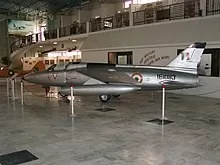
Out of 246 missions flown by F-104s during hostilities, 42 were at night against the IAF Canberras. Middlecoat was highly enthusiastic about these night interception sorties and flew many such missions. The first positive encounter between a Canberra and PAF night fighter took place on the night of 13/14 Sep when a Star Fighter flown by Middlecoat from Sargodha intercepted a Peshawar intruder during its high-level exit.
The Sakesar radar carried out the interception. As Middlecoat arrived at the position directed by the radar, nothing was visible in the pitch-dark night. Middlecoat carried out a completely blind interception and was vectored about half a mile behind the intruder by the Sakesar radar.
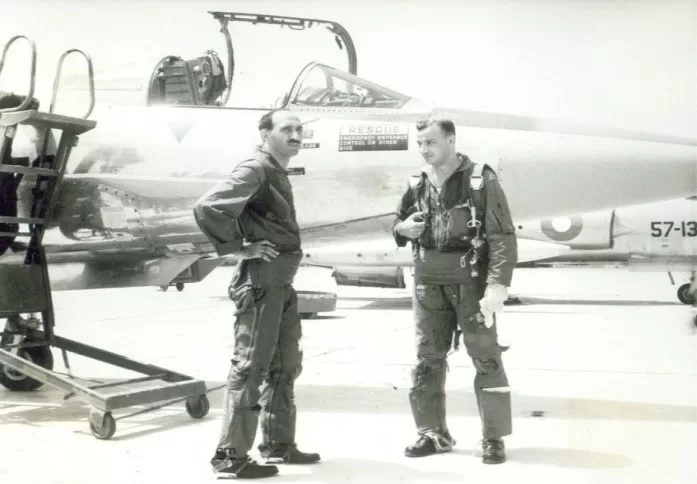
On arriving at the directed position, he fired his lethal sidewinder. Missile tone indicated acquisition of the target, and seconds later an explosion was seen at a range of about 4000 feet. It was an indication that the impact or proximity fuse of the sidewinder had fired, and the Canberra was assumed to have been destroyed, although confirmation was not possible since the encounter took place over the Indian Territory.
Middlecoat also flew daring photo recce missions deep inside enemy territory. He flew with great courage and produced some extra ordinary results. The intelligence gathered by him while flying these missions proved to be of great importance to PAF and Pak Army in assessing the battlefield.


